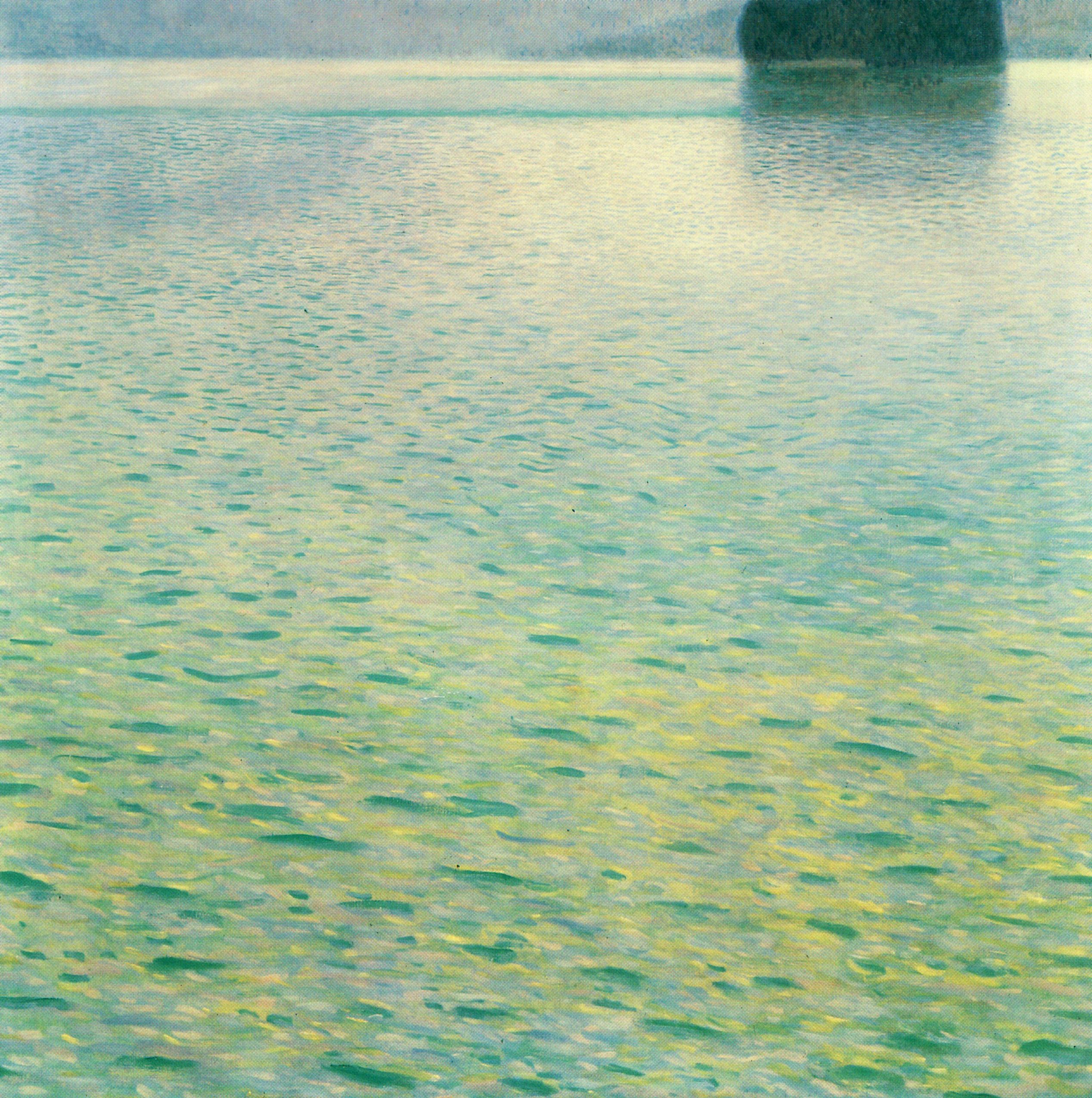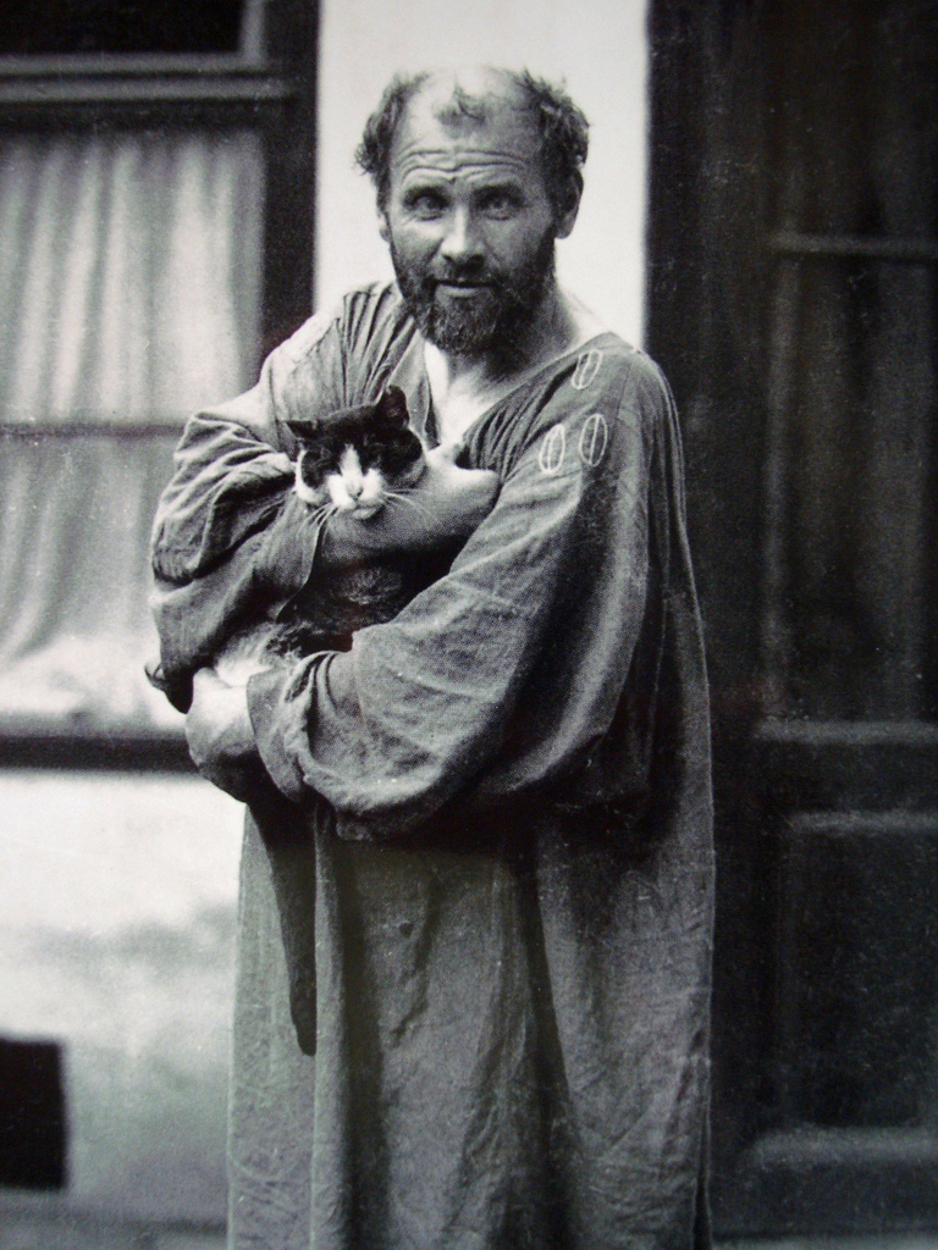Of his three basic subject types — portraits, allegories and landscapes — Klimt came latest to landscape. Two somewhat antithetical aspects of his career seem to have been responsible for this. On the one hand, by the late 1890s, he at last had the time and money to afford vacations — both literally and artistically — from the portrait work that had previously provided his main economic sustenance. On the other hand, the increasingly controversial nature of his work made such vacations an emotional necessity. Initially a form of private relaxation, landscape painting eventually also became a viable source of income. as the support for his more inflammatory public allegories gradually dried up. It is said that Klimt was fascinated by water and could spend hours just staring at the lake, watching the changing patterns of light and color. His Island in the Attersee (the Litzlberg Island opposite the tavern of the same name where he stayed between 1900 and 1907) is certainly suggestive of such preoccupations. Although aspects of the painting could be called Impressionistic or pointillistic, Klimt was not trying to render the effects of natural light so much as to create a tone-poem wherein multi-hued dabs of paint, tuned to a similar pitch, vibrate together in transcendent harmony. Klimt’s high horizon line is characteritic of both late Impressionism as well as Art Nouveau. In this case, the horizon thrusts all the compositional activity almost off the picture plane; over ninety percent of the painting is pure surface, a delicately modulated field of brush strokes that nearly loses hold of objective reality and approaches total abstraction. The masterpiece is now exhibited in the oldest gallery in North America, NYC Galerie St. Etienne, which specializes in Austrian & German Expressionism.




Island in the Attersee
oil on canvas • 100 x 100 cm
 Gustav Klimt
Gustav Klimt